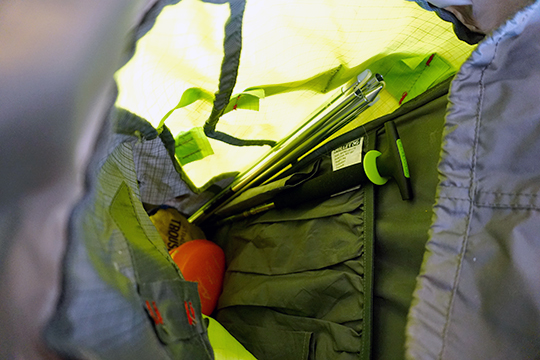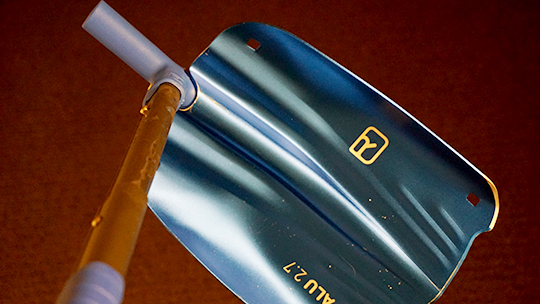[Photo] Andrew Councell
For most of us, when we think of avalanche risk, we think of skiers and snowmobilers, not ice climbers, alpinists or mountaineers. Statistically that’s fair; according to the Colorado Avalanche Information Center’s numbers, in the last decade or so the number of climbers killed in avalanches has amounted to about 10 percent of total fatalities. However, if you take a longer look, say back to 1950, you’ll see that 180 climbers (or about 18 percent of total fatalities) have been killed in avalanches. In Canada, there have been 66 climbing-related avalanche incidents and 116 fatalities since 1927, and 41 avalanche-related deaths since 2004. In the States last year alone, avalanches claimed the lives of seven climbers. It’s clear that we are not immune.
When climbing on snow and ice-covered mountains, we as climbers should be thinking about the risk of avalanche. Many ice climbs form in gullies, chutes and couloirs–the “gutter systems” of the mountains, often at the bottom of large alpine faces that are constantly sloughing debris. In the ski world, we’re often considering “overhead hazard” and seeking ways to minimize our exposure. But in ice climbing, for example, we’re often subjecting ourselves to that hazard for hours at a time. Like it or not, as winter climbers we’re deep in avalanche country.
And yet, very few climbers carry the standard trifecta of avalanche-rescue equipment: transceiver, probe and shovel. Some might argue there’s little point because an avalanche on exposed, vertical terrain would be deadly anyway. But over the last few years, I’ve heard of a number of close calls and near misses on approaches and descents, either before or after the technical climbing. And there are countless more incidents that go unreported. Another counterargument to climbing with avalanche gear is that it’s heavy. So I asked Ortovox to send me a few lightweight items that I might consider carrying on avalanche-prone ice routes here in the Canadian Rockies.
Ortovox Zoom+ Transceiver
MSRP: $300
The Zoom+ is a 200g (including battery), wallet-sized beacon, precisely the kind of transceiver that would appeal to weight-conscious climbers. This is partly due to its simple design: there is only an ON/OFF switch and a mechanism to enter “search” mode. Furthermore, the unit is powered only by a single AA battery. Its size and weight keep it nearly unnoticeable while climbing. The operating system is also simple, something even dumb-dumb climbers like me can operate. That being said, this is a simple transceiver best suited for simple scenarios where it’s unlikely for more than one person to be buried as there is no marking/flagging or “special mode” feature for multiple-burial situations. But since climbing teams are often only a party of two or three, the Zoom+ could be ideal.
My test for any transceiver is to hand it to an inexperienced user, tell them nothing about it (except what it does), then sit back and watch the sparks fly. I did this with about a dozen different folks with various backcountry experience, from zero to mucho. Most folks were able to decipher enough during their initial search to easily locate one buried target. Some found the arrows and screen confusing and jumpy. When it came to finding two targets, many users required coaching to locate the second target. The takeaway: the user interface isn’t the most intuitive, and it helps to actually read the manual to discover all the nuances of this unit. As with all beacons practice, practice, practice.
Pros: Lightweight; small in size; simple operation; ideal for the scenarios climbers are often exposed to.
Cons: No marking function for multiple burials; not the most intuitive operating system.
Ortovox 240 Light PFA Probe

[Photo] Andrew Councell
MSRP: $54
I mostly used this probe for guiding both backcountry ski touring and heli-skiing. While I probably used the probe more while touring (snow tests, locating crevasses/cornices, etc), the daily abuse of heli-skiing put it to the test. For climbers, the notable points are that this probe is light (260g) and packable, measuring about 17in/44cm in length. This is because, as the name suggests, the probe is 240cm in length (vs. common 300+cm lengths). It is also of a slightly thinner stock and has a Dyneema draw-line inside rather than a beefier cable.
While the Dyneema draw-line certainly lightens the probe overall, I found it also facilitated tangling if the probe was not folded and stored neatly. The only obvious downside to this is that I had to untangle the cord before throwing the probe together, a potentially time-consuming affair when each second counts. I also wonder how the Dyneema will hold up to repeated use, perhaps affecting its longevity. The 240 Light PFA is a great probe for climbers because it’s light enough to always have along, and, given how infrequently we’ll use it, it’s durability is less of a concern.
Pros: Lightweight and packable enough to not notice.
Cons: Dyneema cord gets tangled easily.
Ortovox Pro Alu III Shovel

[Photo] Andrew Councell
MSRP: $69
This is one tough and burly shovel. In fact, it may be too burly for climbers because its strength comes at the cost of weight (790g). I thought the blade was a little small and too serrated for snow-science work, but I loved the quick-and-easy assembly (even if disassembling was harder because of the small “buttons”). And if I needed to clear a lot of snow quickly or make an impromptu landing for a helicopter, the Pro Alu III could move an unreal amount of snow very quickly in “hoe mode,” a configuration utilizing the handle’s end of the shaft. There is also an optional addition called the “Pocket Spike,”which is essentially an ice axe “pick” that attaches to the shovel shaft. I was hoping to see how well this would serve as a mountaineering axe but ended up with the Pro Alu III without the Spike.
One notable downside to this shovel was that it did not assemble well when the shaft was icy. If I left it in my pack overnight without drying it out, residual water inside the shaft would freeze en route to the day’s objective, making it more difficult to put together in the field. While this can happen with any shovel, it seemed especially problematic with this shovel due to the grooved shaft holding onto ice more easily. However, when not iced up the the Pro Alu III clicked together just fine.
Pros: Very strong design capable of moving a lot of snow very quickly; durable. The “Pocket Spike” may offer utility as a “mountaineering axe” when added security is needed.
Cons: Tends to get sticky if it ices up; not the lightest shovel on the market.